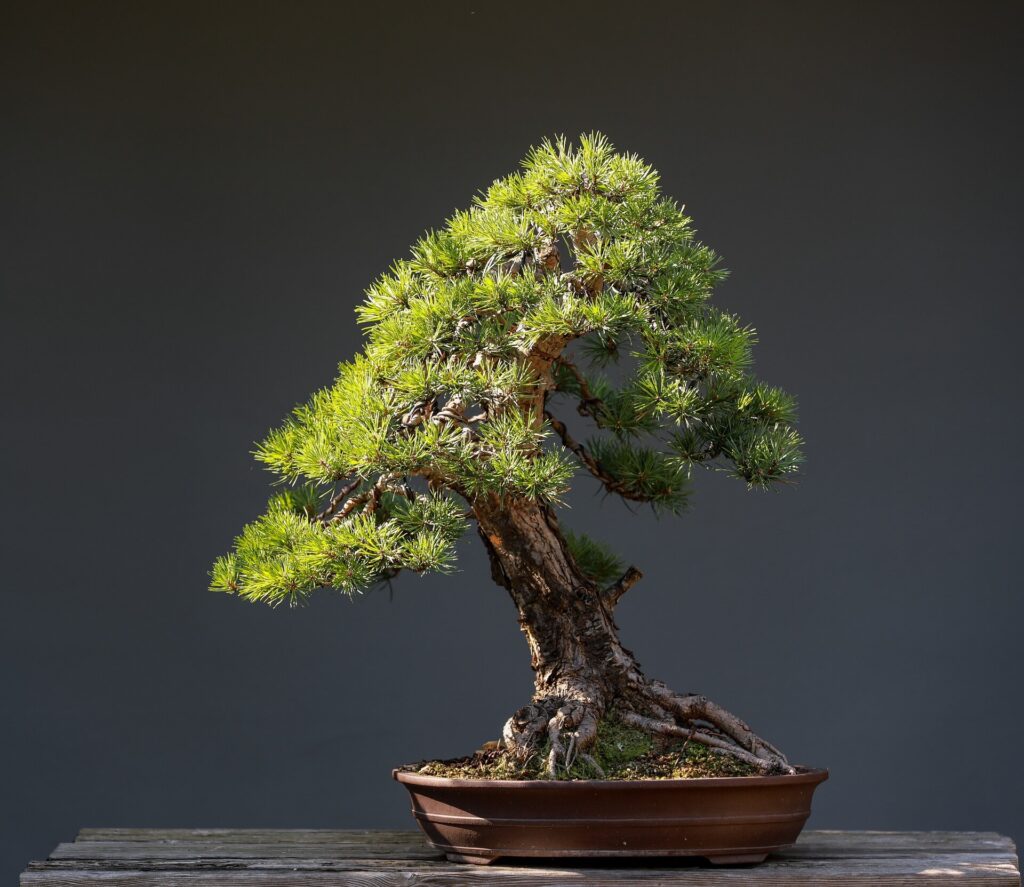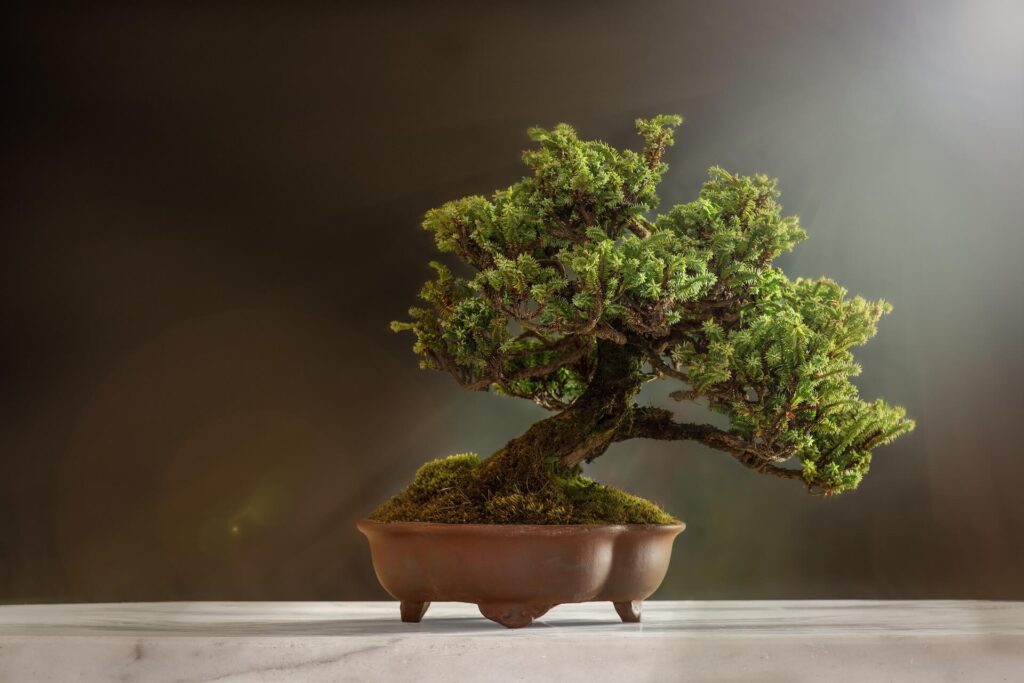Bonsai, the ancient art of cultivating miniature trees, offers a unique and rewarding experience for plant enthusiasts. Although caring for bonsai may seem daunting to beginners, with the right knowledge and techniques, anyone can nurture these beautiful trees. This comprehensive guide provides essential bonsai plant care tips for beginners, covering everything from watering to pruning, ensuring your bonsai thrives.
Understanding the Art of Bonsai
Bonsai is more than just growing a small tree in a pot; it is an art form that requires patience, skill, and dedication. Originating in China and popularized in Japan, bonsai involves the meticulous cultivation of trees to create aesthetically pleasing shapes and forms. Understanding the philosophy and history behind bonsai can deepen your appreciation and enhance your care practices.
Choosing the Right Bonsai Tree
Selecting the right bonsai tree is crucial for beginners. Some species are more forgiving and easier to care for than others. Popular beginner-friendly options include the Ficus, Juniper, and Chinese Elm. Consider your local climate, as well as whether you prefer an indoor or outdoor bonsai, when making your choice.

Essential Tools for Bonsai Care
Investing in the right tools can make bonsai care more efficient and enjoyable. Basic tools include pruning shears, concave cutters, wire cutters, and a bonsai rake. As you gain experience, you may expand your toolkit with specialized items like jin pliers and root hooks.
The Importance of Location
The placement of your bonsai tree significantly impacts its health and growth. Most bonsai trees require plenty of natural light. For outdoor bonsai, choose a location with morning sun and afternoon shade. Indoor bonsai should be placed near a south-facing window to ensure adequate light. Avoid sudden changes in temperature and protect your bonsai from harsh weather conditions.
Watering Your Bonsai Tree
Proper watering is vital for bonsai health. The frequency and amount of water needed depend on the tree species, pot size, and climate. Generally, water your bonsai when the top inch of soil feels dry. Ensure the water reaches the roots by watering thoroughly until it flows out of the drainage holes. Avoid overwatering, which can lead to root rot.
Pruning and Shaping Techniques
Pruning is essential for maintaining the shape and health of your bonsai. Regular pruning encourages new growth and helps you control the tree’s size and form. Use sharp, clean tools to make precise cuts. In addition to pruning, wiring can guide the growth of branches, allowing you to create intricate shapes. Be gentle and monitor the wire to prevent damage to the tree.
Repotting Your Bonsai Tree
Repotting is necessary to provide fresh soil and prevent root-bound conditions. Depending on the species and growth rate, repot your bonsai every 2-5 years. Spring, when the tree is beginning its growth cycle, is the best time for repotting. Carefully trim the roots and replace the old soil with a well-draining bonsai mix.
Soil and Fertilization
Choosing the right soil mix is crucial for bonsai health. Bonsai soil should provide good drainage while retaining enough moisture. A typical mix includes akadama, pumice, and lava rock. Fertilize your bonsai regularly during the growing season with a balanced, slow-release fertilizer. Adjust the frequency and type of fertilizer based on the tree species and growth stage.
Bonsai Wiring Tips
Wiring is a technique used to shape and train bonsai branches. Use anodized aluminum or annealed copper wire, which is flexible yet strong. Start with thicker branches, gradually moving to thinner ones. Wrap the wire at a 45-degree angle, ensuring it is snug but not too tight. Monitor the wire regularly and remove it before it cuts into the bark.
Pest and Disease Management
Bonsai trees are susceptible to pests and diseases. Regularly inspect your bonsai for signs of trouble, such as yellowing leaves, spots, or unusual growths. Common pests include aphids, spider mites, and scale insects. Use organic insecticidal soap or neem oil for treatment. Proper watering, ventilation, and cleanliness can prevent many diseases.
Seasonal Care for Bonsai Trees
Bonsai trees require different care depending on the season. In spring, focus on repotting and pruning. Summer requires diligent watering and protection from extreme heat. Fall is the time for less frequent watering and preparing the tree for dormancy. Winter care involves protecting the tree from frost and maintaining minimal watering.
Indoor vs. Outdoor Bonsai
Understanding the differences between indoor and outdoor bonsai is essential. Outdoor bonsai, such as pines and junipers, require seasonal changes and full sunlight. Indoor bonsai, like Ficus and Jade, thrive in stable, warm environments with indirect sunlight. Ensure you choose the appropriate species for your living conditions to promote healthy growth.

Common Mistakes to Avoid
Beginners often make mistakes that can harm their bonsai. Overwatering is a common issue, leading to root rot. Inadequate light can stunt growth, while incorrect pruning can damage the tree’s structure. Avoid using regular potting soil, which retains too much moisture. Learning from these common mistakes will help you develop better bonsai care practices.
Bonsai Aesthetics and Display
Displaying your bonsai tree can enhance its beauty and your enjoyment. Choose a stand or table that complements the tree’s style. Pay attention to the background, ensuring it highlights the bonsai’s form. Regularly clean the pot and trim dead leaves to keep your display tidy. Rotating the tree occasionally ensures even growth and sunlight exposure.
The Benefits of Growing Bonsai
Growing bonsai offers numerous benefits beyond aesthetic pleasure. It promotes patience, mindfulness, and attention to detail. Caring for bonsai can be therapeutic, reducing stress and providing a sense of accomplishment. The practice also fosters a deeper connection with nature and an appreciation for the intricacies of plant growth.
Joining Bonsai Communities
Joining bonsai communities can enhance your learning and enjoyment. Local bonsai clubs, online forums, and social media groups provide opportunities to share experiences, seek advice, and participate in events. Engaging with other enthusiasts can inspire new ideas and improve your bonsai skills.
Advanced Bonsai Techniques
As you gain experience, you may explore advanced bonsai techniques. Techniques such as grafting, defoliation, and jin (creating deadwood) add complexity and artistry to your bonsai practice. Learning these advanced methods can elevate your bonsai care and allow you to create more intricate and unique designs.
Creating a Bonsai Care Schedule
Developing a consistent care schedule ensures your bonsai receives the attention it needs. Include tasks such as watering, fertilizing, pruning, and inspecting for pests. Adjust the schedule based on the tree’s species and growth stage. Keeping a bonsai journal can help you track progress and identify patterns in your tree’s development.
Understanding Bonsai Styles
Bonsai styles are classified into various traditional forms, each with unique characteristics. Some common styles include formal upright (Chokkan), informal upright (Moyogi), and cascade (Kengai). Understanding these styles can guide your pruning and shaping efforts, helping you create a bonsai that reflects your artistic vision.
Selecting the Right Pot for Your Bonsai
The pot is an integral part of bonsai aesthetics and health. Choose a pot that complements the tree’s style and size. The pot should have adequate drainage holes to prevent waterlogging. Glazed pots are typically used for deciduous and flowering trees, while unglazed pots are preferred for conifers.
Training Young Bonsai Trees
Training young bonsai involves shaping and guiding their growth from an early age. Regular pruning, wiring, and repotting help establish the desired form. Be patient, as developing a bonsai from a young tree can take several years. Consistent care and attention during the early stages are crucial for successful bonsai cultivation.
Bonsai and Zen Gardening
Bonsai is closely related to Zen gardening, emphasizing simplicity, balance, and harmony. Incorporating bonsai into a Zen garden can create a tranquil and meditative space. Elements such as rocks, sand, and water complement the bonsai, enhancing the garden’s overall aesthetic and spiritual appeal.
Bonsai as a Therapeutic Hobby
Caring for bonsai can be a deeply therapeutic hobby. The meticulous process of pruning, shaping, and nurturing the tree fosters mindfulness and reduces stress. The satisfaction of watching your bonsai grow and flourish provides a sense of accomplishment and well-being. Bonsai care can be a peaceful retreat from the demands of daily life.
Tips for Bonsai Exhibitions
Participating in bonsai exhibitions is an excellent way to showcase your work and connect with other enthusiasts. Prepare your bonsai by ensuring it is healthy, well-pruned, and free of pests. Choose a display stand that highlights the tree’s best features. Practice setting up your display at home to ensure a smooth presentation during the exhibition.
Conclusion
Bonsai cultivation is a rewarding and enriching hobby that combines art, nature, and patience. By following these essential bonsai plant care tips for beginners, you can successfully nurture and enjoy your bonsai tree. Remember, bonsai is a journey that requires continuous learning and practice. With dedication and care, your bonsai can thrive and bring joy for years to come.